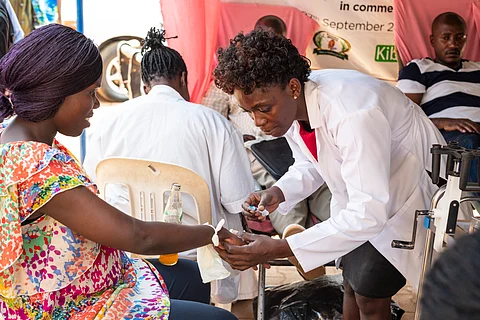

A new report from the World Health Organization (WHO) reveals that while the global stock of nurses is projected to rise to 36 million by 2030, the growth will be unevenly distributed, exacerbating existing inequities and deepening the global nursing shortage.
According to the report, Africa is expected to see only a 7% increase in its nursing workforce between 2023 and 2030. By that year, nearly 70% of the global nursing shortage will be concentrated in the African and Eastern Mediterranean regions — an increase from 2020, when these two regions accounted for 58 per cent of the global shortfall.
The report, State of the World’s Nursing 2025, was released by the WHO, International Council of Nurses (ICN), and partners on International Nurses Day 2025.
This year’s theme, “Our Nurses. Our Future. Caring for Nurses Strengthens Economies,” highlights the critical economic and societal benefits of investing in the nursing profession.
As of 2023, the African region had an estimated nursing stock of 1.7 million— the second lowest globally, after the Eastern Mediterranean, which had 1.3 million nurses. The Western Pacific Region leads with 8.5 million nurses.
The newly released report offers a comprehensive and current analysis of the nursing workforce at global, regional, and national levels across 194 countries. It highlights persistent and worsening disparities in the distribution of nurses, education access, wages, working conditions, and workforce shortages.
Significant differences in nurse-to-population ratios were documented. In the WHO African Region, there were 14.1 nurses per 10,000 people in 2023, compared with 76.9 per 10,000 in the European Region.
There are also stark contrasts in median entry-level wages for nurses by WHO region and income group. The European and Eastern Mediterranean regions report the highest median wages, while the African and South-East Asian regions report the lowest.
Improved data on nurse graduates paints a mixed picture regarding progress in boosting domestic nurse production. Graduate-to-population ratios remain particularly low in Africa, perpetuating inadequate access to care and workforce inequities.
Although nursing is typically a female-dominated profession, 15 out of 150 reporting countries reported more male than female nurses. Notably, 10 of these countries are in the African region. Low female representation in health and care roles often reflects broader gender disparities in labour market participation.
The report emphasises that investing in the education, employment, service delivery, and leadership of nurses can boost economic growth by generating decent jobs and increasing women’s workforce participation.
Roughly two-thirds of countries surveyed reported having nursing leadership development programs. These were most common in Europe (78 per cent) and the Eastern Mediterranean (76 per cent), and least common in Africa (43 per cent).
Effective investment in nursing leadership requires comprehensive education and training. In Africa, regulatory bodies and educational institutions play a vital role in developing curricula that incorporate leadership and management training for nurses and midwives.
Empowered nursing leaders are crucial for building resilient, responsive, and equitable health systems capable of tackling current and future health challenges.
As the largest component of the global health workforce, nurses possess a wide range of skills applicable across nearly all healthcare settings. Inequities in the nursing profession affect patient care, health outcomes, system efficiency, equity of access, universal health coverage (UHC), and broader socioeconomic development.
To meet the Sustainable Development Goals (SDGs) by 2030, these disparities must be urgently addressed. The report provides validated data and evidence to support national policy dialogue and decision-making on where and how to invest in nursing. Its findings aim to equip policymakers and planners with the tools needed to strengthen primary healthcare systems and advance toward universal health coverage.